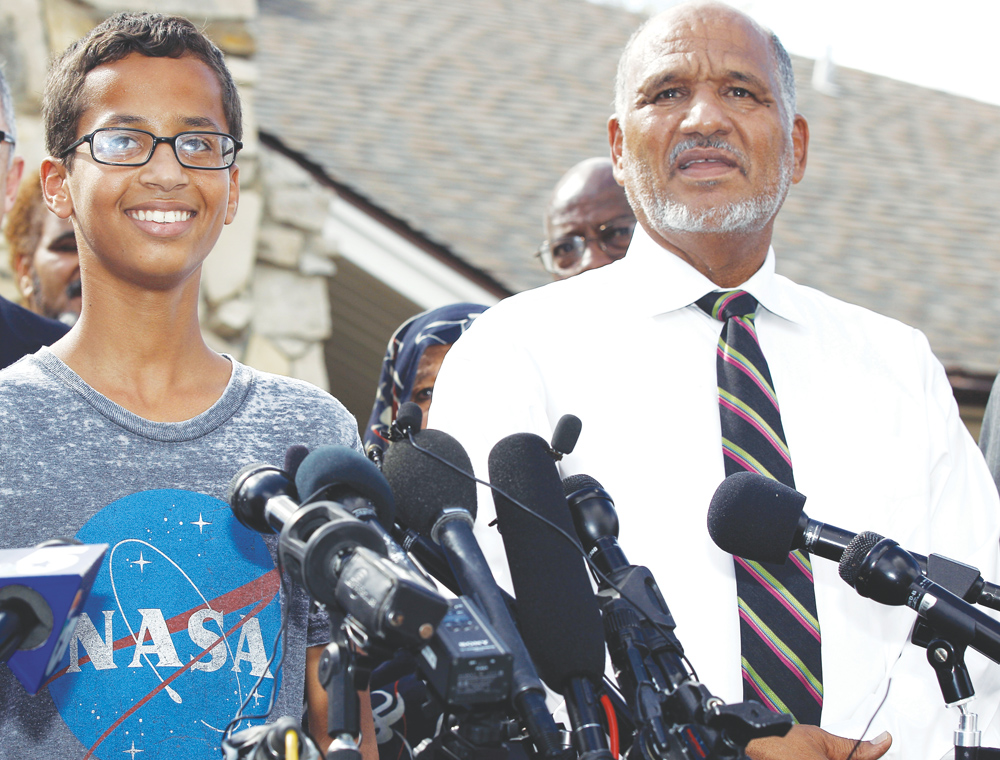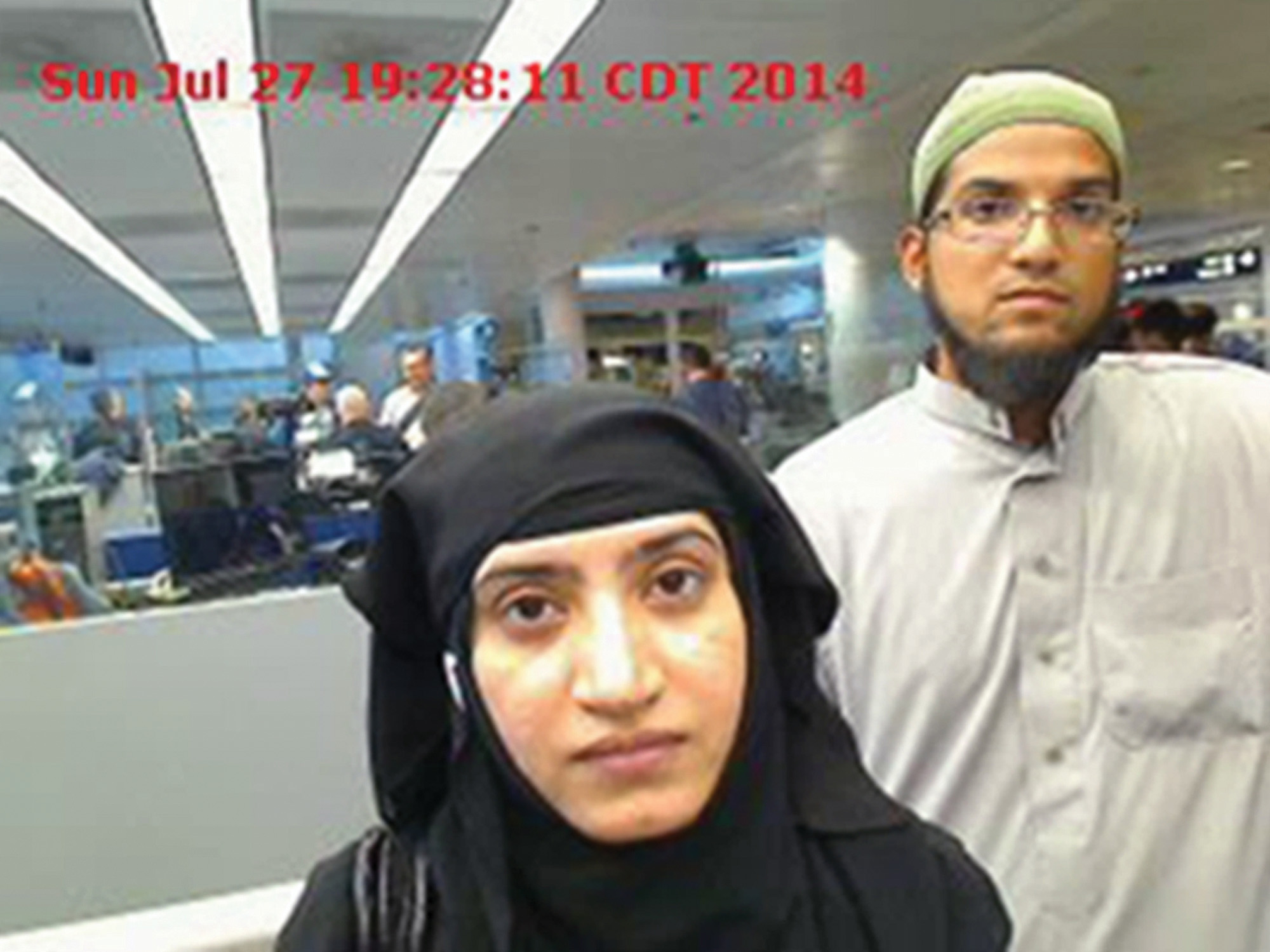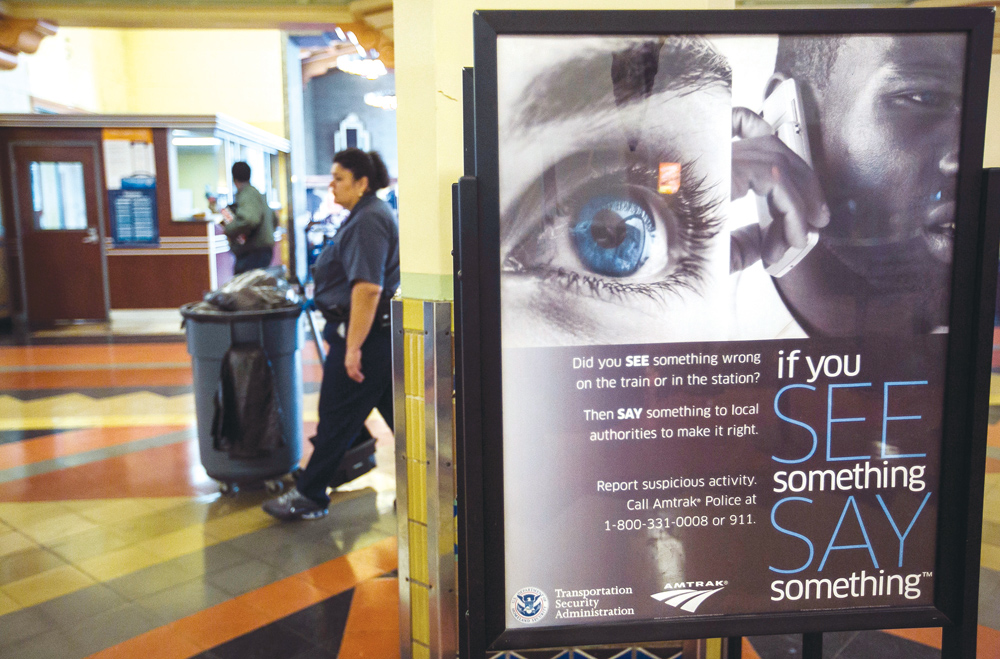“If you see something, say something” has been the dominant counterterrorism slogan since the Sept. 11, 2001, attacks. New York City’s Metropolitan trademarked the catchphrase in 2007, but it can be heard throughout the country.
One of the many government agencies allowed to use it is the Department of Homeland Security, which it describes as the motto of a campaign that “engages the public in protecting our homeland through awareness,” paired with the Hillary Clinton-esque observation, “It takes a community to protect a community.”
“[Y]our every day is different than your neighbor’s — filled with the moments that make it uniquely yours,” says the “if you see something, say something” section of the DHS website. “So if you see something you know shouldn’t be there — or someone’s behavior that doesn’t seem quite right — say something. Because only you know what’s supposed to be in your everyday.”
But what if when you see something, you say the wrong thing? In September, authorities were suspicious of a clock 14-year-old Ahmed Mohamed said he had made and brought to school. Sensing it “shouldn’t be there” or didn’t “seem quite right,” authorities suspected the clock was a bomb. Mohamed was arrested, but ultimately cleared and never charged with anything.

In September, authorities were suspicious of a clock 14-year-old Ahmed Mohamed said he had made and brought to school. (AP Photo)
“Clock Boy” briefly became a national hero and the Irving, Texas, officials who saw something and said something became symbols of anti-Muslim paranoia. “Cool clock, Ahmed,” President Obama tweeted from his official account. “Want to bring it to the White House? We should inspire more kids like you to like science. It’s what makes America great.” The message received more than 400,000 retweets.
In late November, Ahmed’s family demanded an apology and $15 million. Of that sum, $10 million was to come from the city of Irving and another $5 million from the Dallas-area school district. A family attorney called the local authorities’ actions “inexcusable.”
Speaking at a December dinner held by a Muslim organization, Attorney General Loretta Lynch promised the Justice Department would investigate the incident. “When we are ruled by fear, we are not making ourselves safe,” Lynch declared.
The attorney general’s remarks came the day after 14 people were killed and 22 badly injured in an attack on a San Bernardino, Calif., social services center carried out by Syed Rizwan Farook and Tashfeen Malik. FBI Director James Comey described the married couple as “homegrown violent extremists” who were “inspired by foreign terrorist organizations” and engaged in talk “about jihad and matrydom.”
Farook was homegrown, as he was born in Chicago, but Malik was born in Pakistan and had spent much of her life in Saudi Arabia before arriving in the United States on a fiancee visa. The two had become radicalized Muslims. A Los Angeles news station reported that a man who had been working in the area where the couple lived “said he noticed a half-dozen Middle Eastern men in the area in recent weeks, but decided not to report anything since he did not wish to racially profile those people.”
“We sat around lunch thinking, ‘What were they doing around the neighborhood?'” the KCBS-TV station quoted the man as saying. “We’d see them leave where they’re raiding the apartment.”

Fourteen people were killed and 22 badly injured in an attack on a San Bernardino, Calif., social services center carried out by Syed Rizwan Farook and Tashfeen Malik. (AP Photo)
Similarly, the Modesto Bee reported that days after the San Bernardino attack, a local man was at the gun range and saw what he described as approximately seven Muslims firing rifles “with ammunition clips far bigger than the 10-round capacity” allowed by state law.
The man became upset and left the shooting range, telling the Bee that so soon after San Bernardino “just the idea of seeing Muslims shooting was shocking to me. Any other day, I wouldn’t have been caught so off guard.” He surmised the shooters were Muslims based on their clothing, such as the head coverings worn by the women.
But did he call the police? No. He wasn’t 100 percent positive they were doing anything “outside the law.” Having seen something, he didn’t say something. The newspaper asked various local authorities if he should have called in his concerns. They mostly said “yes” based on the possible gun control violation, but emphasized the presumed religion or race shouldn’t matter.
“If they’re dressed like Muslims dress and are out on the range, so what? So are African-Americans, Sikhs, Latinos and whites,” one local sheriff was quoted as saying. Another area community’s police department spokesman said, “We ask all of our citizens if they ‘see something, say something.'”
There are several reasons for the apparent contradiction between encouraging people to report their suspicions while also suppressing some of them. The first is to shield innocent Muslims from unjust punishment or harassment. Another is the view that to do otherwise may hand terrorist groups like the Islamic State a propaganda victory in its efforts to portray Western anti-terror efforts as a religious war against 1.6 billion Muslims. There is also a desire to create a strong institutional bias against ethnic, racial or religious profiling in law enforcement.
Additionally, religious, civil rights and other pressure groups are vigilant when it comes to anything they regard as evincing undue prejudice. After the 2006 “flying imams” case, in which six Muslim religious leaders were pulled off a U.S. Airways flight when passengers and crew members reported suspicious behavior, both the National Association for Advancement of Colored People and the Council on American-Islamic Relations sought investigations by Congress, the Justice Department and the Transportation Safety Administration.
Were the imams, who were found guilty of no wrongdoing, victims of discrimination? One of the complaints against them was that they were praying too loudly. Or was it necessary to investigate given the high stakes of being wrong?
Waiting at an Amtrak station as videos warning against suspicious activity play, travelers are encouraged to look for certain behaviors rather than any specific group characteristics: bags left unattended, people boarding trains only to deposit packages that could contain hazardous materials, nervous expressions, loners snapping cell phone pictures of station security arrangements. The actors behaving suspiciously in these videos invariably look as Middle American as possible.
Or as the DHS website states, the see something “campaign respects citizens’ privacy, civil rights and civil liberties by emphasizing behavior, rather than appearance, in identifying suspicious activity.”
“Factors such as race, ethnicity and/or religious affiliation are not suspicious,” DHS continues. “The public should only report suspicious behavior and situations (e.g., an unattended backpack or package, or someone breaking into a restricted area). Only reports that document behavior that is reasonably indicative of criminal activity related to terrorism will be shared with federal partners.”
But there are indications that far from harboring latent Islamaphobia, many and perhaps most Americans don’t want to profile or discriminate and they certainly don’t want to be perceived as biased. And there are concerns that the self-censorship undercuts the whole “see something, say something” ethos in ways that could be dangerous in an era of heightened terror alerts.
Even outspoken critics of radical Islam sometimes feel constrained. “Because I have opponents who closely monitor my actions, I am especially inhibited from pointing to a problem,” historian and commentator Daniel Pipes told the Washington Examiner. “What if it’s benign? I’ll be pilloried, my reputation possibly in shreds. So, short of being very certain of ‘something’ in the works, my expertise is neutered.”

“If you see something, say something” has been the dominant counterterrorism slogan since the Sept. 11, 2001, attacks. (AP Photo)
“In short,” he added, “‘see something, say something’ is a sensible idea that does not work.” And sometimes it just barely works.
Pipes pointed to the case of Zacarias Moussaoui, who in 2005 pleaded guilty to six counts of conspiracy to engage in terrorism and admitted to being a member of al Qaeda, although he denied participating in the 9/11 conspiracy. Two members of the staff at the flight school where Moussaoui had enrolled turned him in before he could do any damage, but not without fear.
Suspicions of Moussaoui were not limited to his religion, which he did not initially disclose. His experience, lack of a pilot’s license and lack of association with any airline seemed inconsistent with the aircraft he wanted to learn to fly. He didn’t fit the profile of the international business consultant he claimed to be, had no credit card and attempted to pay his $8,300 to the flight school in cash. His determination to fly far exceeded his skills. Finally, he had asked if it was possible to cut off oxygen to the passengers.
Despite all this, when one of the flight school staffers reported Moussaoui to the authorities, he told the FBI, “I’m sticking my neck out. I’m going to either be a hero or a goat … If I’m wrong, it’s probably going to cost me my job.”
If that’s the price of saying something, expect some people to remain silent.

